

McKinsey: this is what the fashion industry can expect in 2019. Subscribers Only. Meet the next-normal consumer. As the world begins its slow pivot from managing the COVID-19 crisis to recovery and the reopening of economies, it’s clear that the lockdown has had a profound impact on how people live.

The period of contagion, self-isolation, and economic uncertainty will change the way consumers behave, in some cases for years to come. These rapid shifts have important implications for any consumer-facing company. Because many of the longer-term changes are still being formed, companies have an opportunity, if they act now, to help shape the next normal. Three takeaways are emerging from our efforts to form a holistic view of the new post-COVID-19 consumer: COVID-19 is changing how consumers behave across every aspect of their lives. 1.
COVID-19 has had a devastating effect on people’s health and well-being on a global scale. We strive to provide individuals with disabilities equal access to our website. Home During lockdown, the home has become a multiverse. Shopping Work. The state of fashion 2019. The year ahead will be an awakening after the reckoning of 2018—a time for fashion companies to look at opportunities and not just at surmounting challenges.
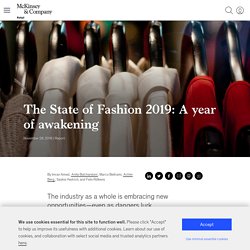
The ones that will succeed will have come to terms with the fact that in the new paradigm taking shape around them, some of the old rules simply don’t work. Regardless of size and segment, players now need to be nimble, think digital-first, and achieve ever-faster speed to market. The influence of Gen Z on fashion. Younger consumers are seriously concerned with social and environmental causes, which many regard as being the defining issues of our time.
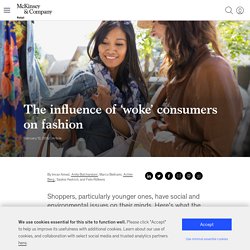
They increasingly back their beliefs with their shopping habits, favoring brands that are aligned with their values and avoiding those that don’t. Fashion industry trends to watch in 2019. The year ahead will be a year of awakening after the reckoning of 2018—a time for looking at opportunities, not just challenges.
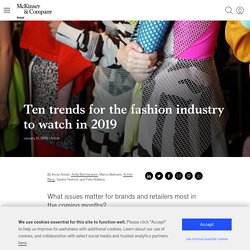
Mintel Portal. Mintel Portal. Mintel Portal. Mintel Portal. Mintel Portal. Sustainability progress report. Discover our sustainability strategy In 2017, Kering unveiled its 2025 sustainability strategy, with a target to reduce its environmental footprint by 40%.
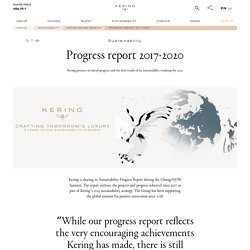
The strategy is underpinned by three pillars: • CARE: taking steps to reduce its environmental footprint and preserve the planet and its natural resources by using innovative tools. • COLLABORATE: contributing to high environmental, ethical and social performance by promoting parity and diversity and becoming an employer of choice. • CREATE: imagining innovative alternatives using an open source approach. In 2020, Kering presents its progress report for its 2025 sustainability strategy. A Brief History of Sustainable Fashion. Type the words ‘future’ and ‘fashion’ into any search engine, and you’ll get a stream of results on 3-D printing, wearable technology and e-commerce websites – sustainability is but a mere mention.
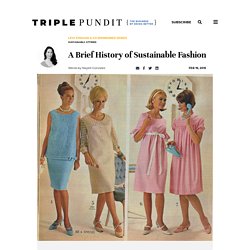
Yet, the S-word has undeniably made its way into the modern apparel-making process and increasingly influences what lands on runways and store racks. The fashion industry’s growing focus on sustainable practices has even prompted business publications such as Forbes to hail “Green is the New Black.” Through innovative business practices, the fashion industry has come a long way in improving environmental and social conditions along complex global supply chains. Still, it has a way to go. A brief look into the industry’s storied past illuminates how corporate style setters have responded to shifting consumer demands, market trends and natural resource constraints over the years – signaling what the future of sustainable fashion might hold.
Sustainability in Fashion Timeline - THR3EFOLD Ethical Fashion Community. By Megan Dawson-Elli, Business Development Manager, THR3EFOLD If you’re new on the sustainability scene you may find this idea of conscious fashion to be completely new, when in fact, momentum has been building for years.
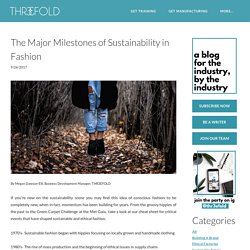
Fabric's green frontier: sustainable textile innovations. Retailers and shoppers alike are counting the cost of failing to act sustainably, and many are hunting for fabrics that have a lower environmental impact than traditional materials.

Be it reducing the chemicals used in dying or leather tanning processes, plastics in polyester, the amount of water used in cotton production or the hunt for vegan alternatives to animal fibres – the sector is shifting its approach to materials as part of a wider drive towards becoming more sustainable. HuffPost is now a part of Verizon Media. HuffPost is part of Verizon Media.

We and our partners will store and/or access information on your device through the use of cookies and similar technologies, to display personalised ads and content, for ad and content measurement, audience insights and product development. Your personal data that may be used Information about your device and internet connection, including your IP address Browsing and search activity while using Verizon Media websites and apps Precise location Find out more about how we use your information in our Privacy Policy and Cookie Policy. Sustainability and the great recession. What has been the real impact of the continued global economic slowdown on companies' efforts to embed sustainability into their business models?
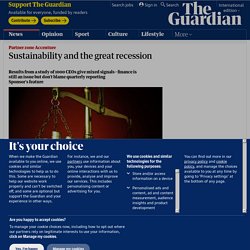
We regularly hear that environmental and social concerns especially, have slipped down the priority sheets of consumers and voters. But what about CEOs? Sustainability and fashion: The new luxury? Fashion week is no stranger to protest or controversial behaviour. From anti-fur movements to the #NoSizeFitsAll campaign, the opportunity to make a controversial statement is rarely missed. The SS 2020 shows in London this year were no exception. While the exact motivations of brands and protestors may be different, one thing is for certain, the luxury fashion industry can no longer ignore its impact on the environment, or shifting consumer attitudes.
But this is not a one sided story, thanks to brands such as Stella McCartney, Mara Hoffman and Rag & Bone, who have been blazing a trail on sustainability for years.